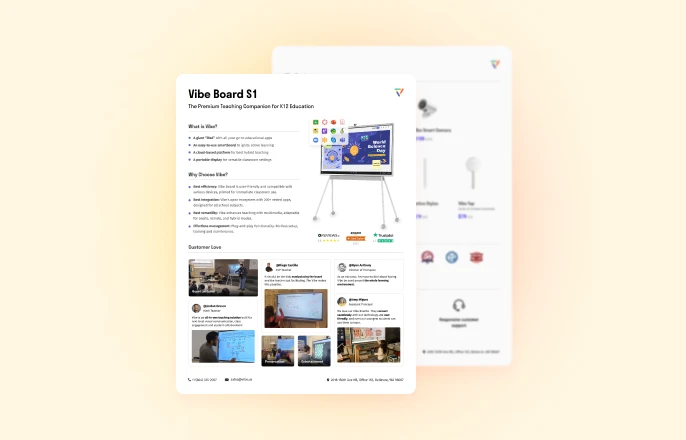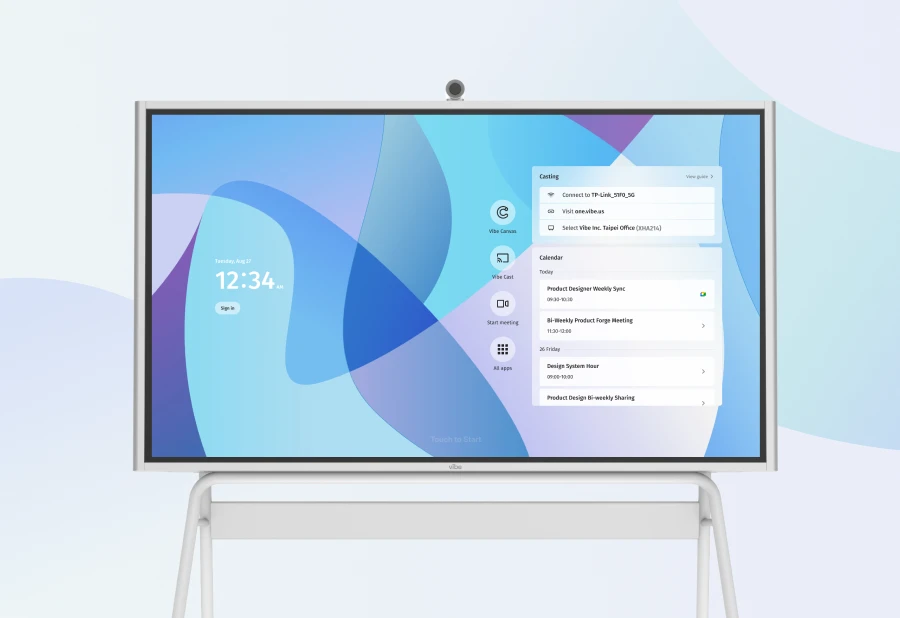Teaching through live video has become the new normal in many school districts. With the switch to distance and hybrid learning, many teachers had to begin using platforms like Zoom on a daily basis, often with little to no training on the best Zoom features for teachers.
Although many people are familiar with the platform’s basics at this point, there’s always more to learn. And who doesn’t want to make the most of a learning opportunity? Check out these Zoom features that are excellent tools for teachers. (Most of these tips are great for meeting facilitators, too.)

Zoom features for group work and feedback
Polling
Zoom’s polling feature allows the user to create either single or multiple choice questions for their meetings or classroom. You can launch the poll instantly during the session and gather responses from students or attendees. Zoom also gives you the ability to download a copy of the poll. You can conduct the poll either anonymously or with information on who voted for what answer, like for interactive classroom quizzes.
Breakout rooms
Breakout rooms in Zoom let you split up the participants into up to 50 different sessions. The meeting host or teacher can split up the groups manually or automatically or let the participants select and enter their own sessions. The host can switch between any sessions at any time.
Non-verbal feedback
By enabling non-verbal feedback in a Zoom session, the students or attendees can use icons beside their names to communicate with the teacher or meeting host without disrupting them. For example, if the speaker was speaking too quickly for someone to follow along, they could use the "slow down" icon to non-verbally let them know they are going too quickly for a certain person to follow. This is a great way to get student or attendee feedback without disrupting the speaker.
Chat
Zoom also has a webinar chat function that allows the host, co-hosts, and attendees or students to communicate through text for the duration of the session. You can enable chat between everyone or only allow the participants to message you directly. Enabling chat is a great way to encourage discussion and collaboration, whether it’s in the classroom or a business setting.
Related: Best Practices for Remote Student Engagement at All Levels
Classic must-haves
Sharing a screen
Most teachers and meeting organizers know about screen sharing in Zoom, but did you know there is much more you can share than just your screen? While in a session, Zoom lets you share:
-
an entire phone screen or desktop
-
one or more applications
-
only a part of your screen
-
videos stored locally
-
audio from your device
-
content from other webcams
-
your iPhone or iPad screen
Whiteboard
Zoom also lets you share content from an interactive digital whiteboard like Vibe. And, not only can you share the screen, you can enable annotations and let your classroom or participants interact with the whiteboard right through the Zoom platform. By turning on the simultaneous screen sharing feature, multiple participants can share their whiteboard at once, meaning that multiple teachers or meeting hosts can share their whiteboard at the same time.
Related: Vibe: Interactive Whiteboarding for Distance and Hybrid Learning
Annotation
Whether you’re sharing a copy of your screen or an interactive whiteboard, you can allow participants to annotate on the screen, which is a great way to keep everyone engaged. Zoom annotations allow participants to:
-
Insert text
-
Draw lines, arrows, and shapes
-
Highlight an area of the screen
-
Create arrows and spotlights
-
And more—try out the annotation feature with your colleagues or students and how it increases their engagement and encourages collaboration.
Zoom features you didn’t know you needed
Virtual backgrounds
Implementing a virtual background behind yourself in Zoom can help keep your audience engaged by having an interesting background, or you can upload your own videos and images to set as the virtual background. You can choose fun, attention-grabbing ones or more practical backgrounds that serve a purpose, such as displaying graphs or statistics.
Transcriptions
This is an amazing feature for both teachers and meeting organizers, and many people aren’t aware of it. By enabling Zoom’s audio transcription feature, the platform will automatically transcribe the audio of your lessons or meetings. You can download the transcription of your session or add it as closed captioning to the video. While it does a great job, it’s not 100% accurate. However, you can make edits to correct any mistakes in the transcription.
 A student looks at the interactive whiteboard while taking notes during class.
A student looks at the interactive whiteboard while taking notes during class.Zoom’s newest features for the classroom
The last four features on this list are relatively new. Zoom implemented them in late 2020, specifically for teachers to use to enhance their virtual classroom. Video reordering is the first of these updates.
Video reordering
This feature allows you to create a virtual seating chart for your students. It’s an update to the Gallery View features, letting teachers drag-and-drop the student video tiles in any order they wish. The order gets locked so that it won’t change when a new person enters or speaks in the virtual classroom.
Multi-pinning
Multi-pinning, Zoom’s update to the Pin Video feature, aims to provide enhanced support for hard-of-hearing and deaf students. How does that work? Essentially, students with hearing problems can "pin" a teacher and interpreter to their screen, allowing them to watch both instructors simultaneously for a more accessible learning experience.
Multi-spotlight
The multi-spotlight feature was an update to Zoom’s old spotlight. It now allows teachers to put up to nine students in the Zoom session into the "spotlight" for the entire class to see. One great way that teachers are using this feature is for group presentations. Every student in the presenting group can be on screen at once, even if they’re all in separate locations.
Unmute with consent
This Zoom feature is an amazing improvement over the platform’s unmuting process. With it, teachers only need permission once to unmute their students. Then the teacher can unmute their students whenever they need to without asking for permission each time. It also carries over to each class the teacher hosts.
Related: Best Practices for Distance Learning in 2021
Use Zoom features to improve meetings
Whether teaching a class or running a corporate meeting, it’s good to have a few go-to engagement strategies on hand. By practicing and using some of these features, you can turn your next Zoom video conference into a collaborative and energizing session.
Vibe offers a collaborative solution combining an interactive digital whiteboard and innovative smart software. Increase engagement and efficiency at your brainstorming sessions, virtual training, and classroom sessions by integrating your favorite applications with video conferencing and an infinite, mess-free writing canvas. Collaborate today with Vibe.
Looking for the latest in interactive whiteboard technology? Check out Vibe today!









-1sbltxxq4FYxHrXrwJVLsCDNsXpqNa.webp)
-5Zp0pmSytvcuYDVs1LvuwplKuRneK0.webp)
